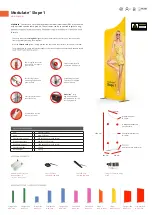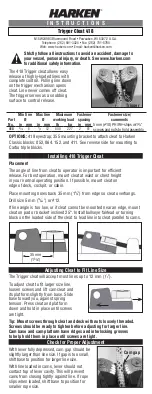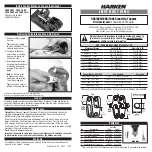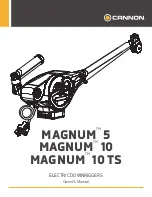
12
Figure 10C - EZ-Link SRD Interface
3.9
DEPLOYING THE SUSPENSION TRAUMA STRAPS:
Figure 11 illustrates deployment of the Suspension Trauma Straps.
In the event of a fall, the Suspension Trauma Straps should be used by the fallen worker to alleviate suspension trauma.
To deploy the Suspension Trauma Straps on your harness:
1. Locate the Suspension Trauma Straps (A) on your harness. The Suspension Trauma Straps should be located in a
zipped container on your front, near the two intersection points of the leg straps.
2. Deploy the Suspension Trauma Straps by opening the zipped compartments located on the containers’ sides. Guide
the Straps (B) out from within each container to a length long enough for you to stand upon. Bring the two Straps
together and secure them to each other by means of the Strap Hook (C).
3. Extend the connected Straps as necessary to create a length of webbing for you to stand upon. Press your heels upon
either side of the connection point and stand up straight. This should transfer a significant amount of weight to the
user’s feet, diminishing the likelihood of suspension trauma.
Figure 11 - Activating the Trauma Straps
PULL
TO
DEPLOY
1.
DEPLOY
BOT
H
PACK
S.
2.
INS
ERT
HOOK
INTO
LOOP
ON
OPPOS
ITE
STRA
P.
3.
PLA
CE B
OTH
FEET
INT
O
WEB LOOP
.
4.
REHOOK
TO
ADJUS
T LOOP
LENGT
H IF
REQUI
RED.
3M
.com
/FallProt
ection
C
B
B
PARK
LANYARD
HERE, SEE
INSTRUCTIONS.
PARK
LANYARD
HERE, SEE
INSTRUCTIONS.
A
3.10 SECURING LANYARDS WITH CHOKER LOOPS:
Some lanyard models include choker loops for connecting to harnesses.
Choker loops are web loops that are designed to choke the lanyard onto a harness before securing to an anchorage point.
See Figure 12 for reference. To secure a lanyard with a choker loop:
1. Insert the lanyard choker loop through the dorsal attachment element on the harness. This may be a D-ring or
another web loop that is part of the harness.
2. Insert the anchoring end of the lanyard through the choker loop so that the lanyard encloses the harness attachment
C
D
E






































